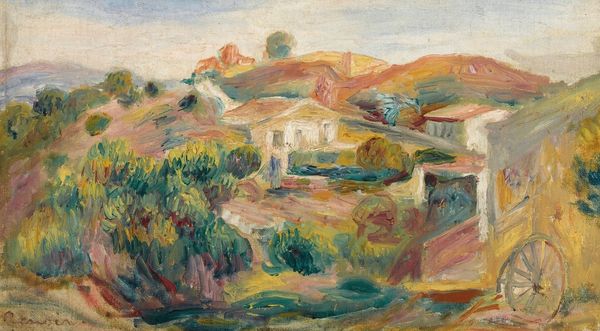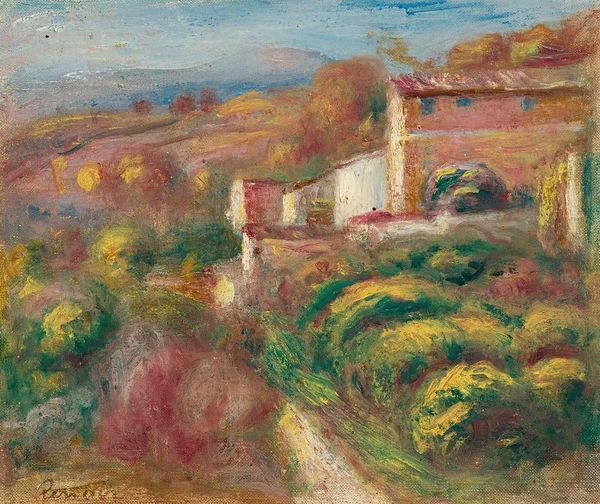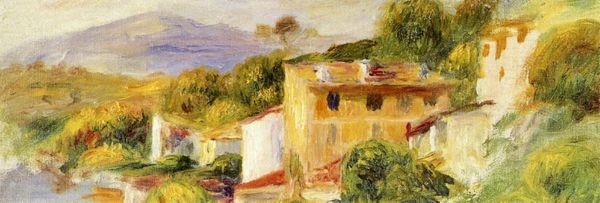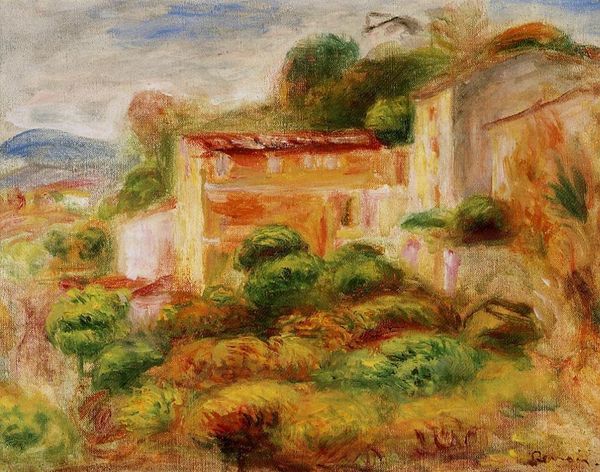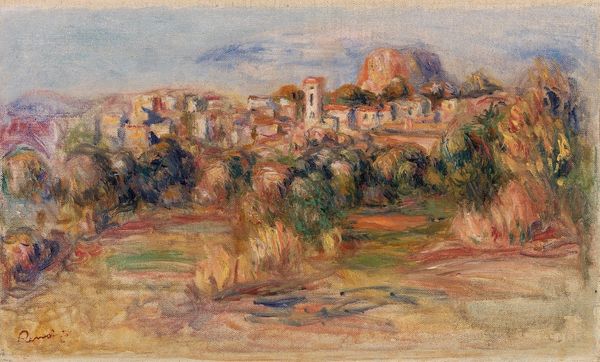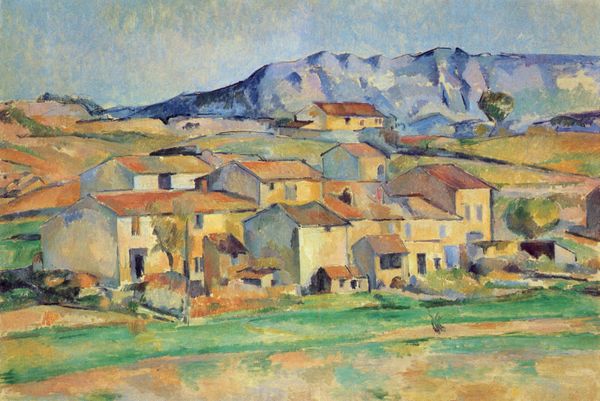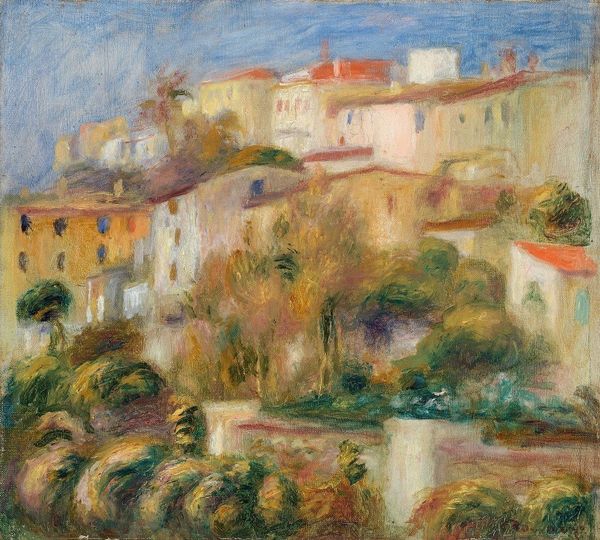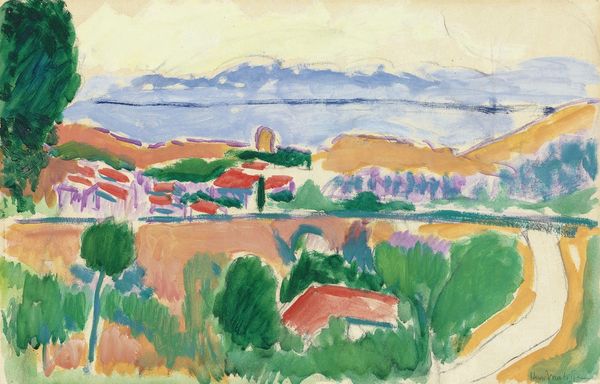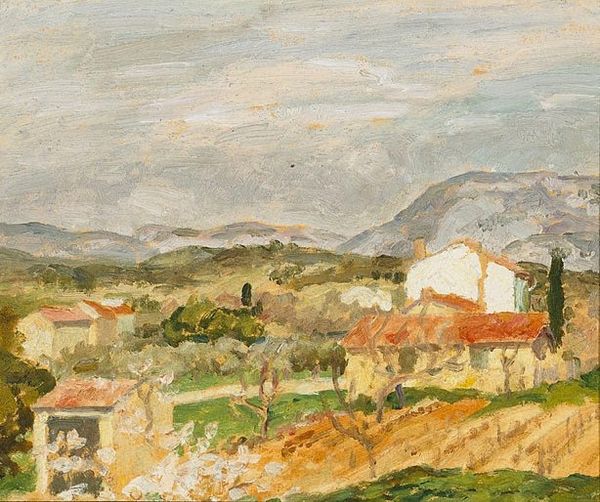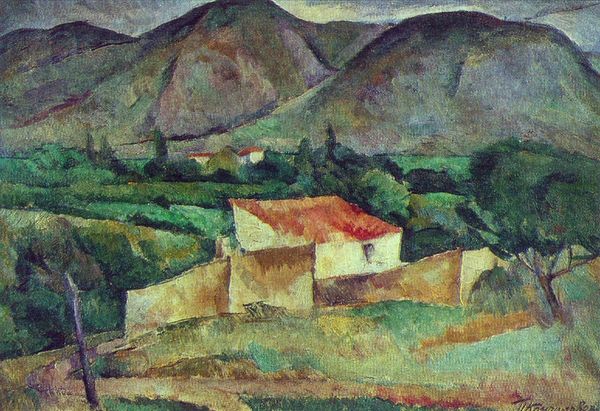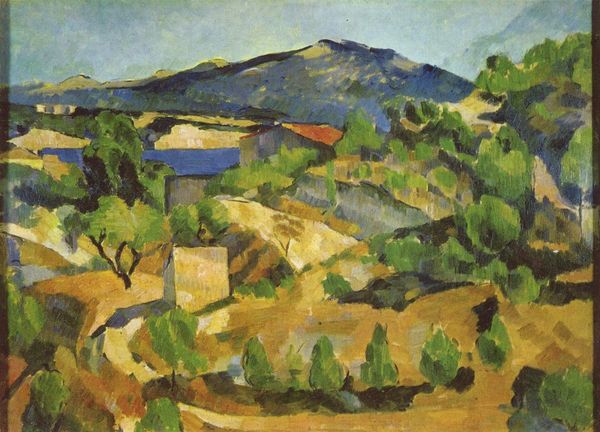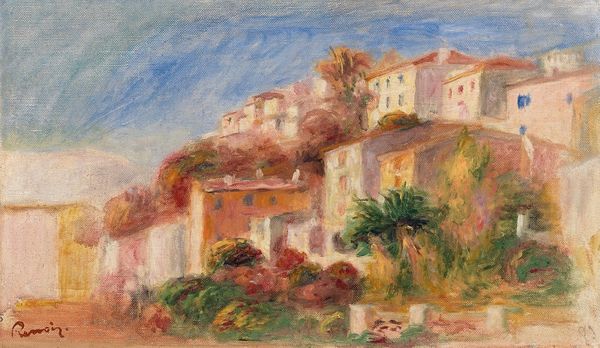
Copyright: Public domain
Curator: This is Renoir’s "Cagnes Landscape," painted around 1910. It's an oil painting, capturing the warmth and light of the South of France, where Renoir spent his later years. Editor: My first impression is how vibrant it is. Despite the traditional subject, there’s an immediacy, like Renoir just quickly laid down the essence of the scene. I love how the buildings almost melt into the foliage. Curator: It's an interesting perspective on modernism through the lens of impressionism. What do you make of Renoir returning to landscapes during this late phase in his career, seemingly moving away from some of the avant-garde movements happening at the time? Editor: It could be read as a political choice, in a way. Perhaps it was a conscious turning away from increasingly rigid academic art, or a comment on what he perceived as an alienation of art from everyday life. To me, this return feels deeply humanistic. He focuses on light and daily life. What's not political about depicting beauty in ordinary existence? Curator: I appreciate that perspective, highlighting Renoir's humanism and his dedication to capturing beauty in everyday settings. What's especially striking is how the landscape seems to serve almost as a portrait of the culture, portraying France. It illustrates its identity and heritage during a time of great change. Editor: The brushstrokes are remarkably free, but his sensitivity towards depicting place, in both geography and identity, makes this feel uniquely modern, particularly considering some feminist thinkers during the period examining domestic spaces and female subjects in this exact setting. This creates dialogue. Curator: Indeed. It connects Impressionist techniques with the broader questions about modernism. Examining the impact of location helps illuminate the significance of this artwork. The landscape serves as both subject and as background and setting that influences and shapes our understandings. Editor: Precisely. It provides a visual language for examining concepts. And in conclusion, "Cagnes Landscape," isn't just a pretty picture. It opens avenues to conversations about history, culture, and personal expression. Curator: A thoughtful end. Considering all the angles truly enhances how we understand and respect its relevance.
Comments
No comments
Be the first to comment and join the conversation on the ultimate creative platform.
